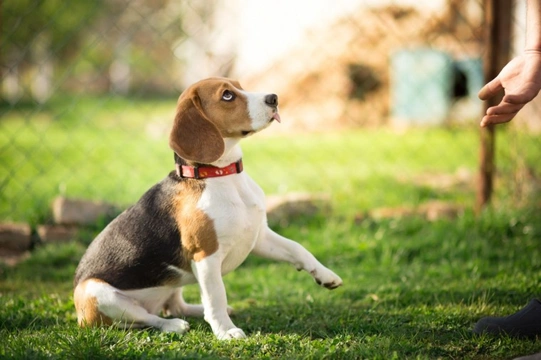
What are the hardest cues to teach a dog, and why?
When it comes to training dogs and teaching them new skills, there really is no broad norm in terms of what dogs are capable of. How many commands – or cues as modern trainers call them – a dog can learn, how quickly dogs learn new cues, and how reliable dogs are about following cues, can all vary widely from dog to dog.
There are also differences in how different breeds of dog may respond to training.
Coupled with this, the training environment, the skills of the handler and their ability to adapt to the individual dog’s personality, age and prior experience, all combine to affect how quickly or easily any dog might learn a given cue.
The first cue that many dogs learn is to ‘sit’. Young puppies spend a lot of time looking up at us and quickly discover that putting their bottoms on the ground in a ‘sit’ position often earns attention and rewards, so they are likely to repeat it!
Teaching a dog to do something in the face of distractions that may seem far more appealing to the dog than what we’re asking them to do is likely to take longer and may not always achieve hundred per cent compliance.
Let’s consider a few of the training issues most commonly asked about.
House training or toilet training
For most new owners, one of their first tasks is house training.
House training a puppy takes time, and whilst some dogs do learn much faster than others, it’s not a skill that dogs pick up in half an hour.
So, why might house training prove difficult? In practice, it’s not hard to teach but nor is it simple for owners to get right as it requires a great deal of time and focus. If you don’t learn to recognise and respond to your dog’s cues indicating a need to toilet, this can delay the learning process.
In addition to teaching your dog to toilet in the right place, you can begin teaching a cue. Decide what word you’d like to use to indicate to your dog you’d like them to pee and say it quietly (so you don’t interrupt the action) when they toilet.
If you need help with house training your dog, check out the pointers in this article.
Recall or “come back when called”
The recall cue is arguably the most important to teach and, with some dogs, one of the more difficult. Your challenge is to teach your dog that when you blow a whistle or use your ‘recall’ word cue (for example, ‘come’ or ‘here’ or ‘back’) your dog should respond immediately by returning to you.
Outdoor environments and competing stimuli may make it hard for your dog to see, hear, or register you. Additionally, if your dog knows that recall means the end of their fun, they’ll have little incentive to return promptly – so you need to be the incentive and to make pleasing you a better reward than staying away!
Get more tips on training a dog for recall here.
Leave it or drop it
Leave it (that is, don’t touch it) and drop it (that is, spit out whatever is in your mouth ) or as some of us refer to it, ‘oh my life, what on earth is he eating!!’ are also skills that need a lot of practise as again, complying with either of these cues requires your dog to give up something good, something that they want, and, in the case of ‘drop it’, something they already have!
Both these cues require plenty of practise with gradually increasing levels of items of interest. There’s no point trying to start teaching with what your dog considers to be a very valuable prize, such as a piece of rotting roadkill or a half-eaten kebab.
You can begin to teach both of these at home where there are no distractions, and you are in control of the items to be left or dropped.
These are important commands to master, particularly if your dog scavenges, or worse, chases wildlife and might catch and harm it.
Curtailing a chase – teaching a ‘Stop’ cue
The recall command is essential not only to get your dog to return to you in the park when you want to go home, and to avoid the embarrassment of standing calling their name for half an hour, but also to keep your dog – and other people, animals, and property – safe.
But there may be times when your dog is chasing another animal, perhaps a squirrel or a cat, interrupting a game of football or heading fast towards a busy road when a reliable ‘Stop’ cue may be better. Dogs excited by the chase may well ignore their own safety too, and could run over a cattle grid, through a barbed wire fence, or straight into traffic.
Again, it will take time to build a reliable response but it’s well worth teaching this as you may find your dog is more likely to respond to a simple ‘Stop’ – after which you could either go and get them or call them back to you – than to a recall cue.
If you have a dog who loves to chase, it’s well worth your time working on exercises teaching ‘Stop’.
Learn more about recall and chasing, and how to improve your dog’s skills, here.



